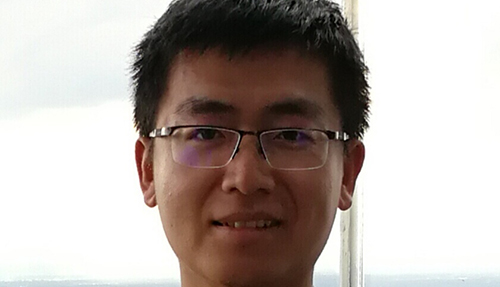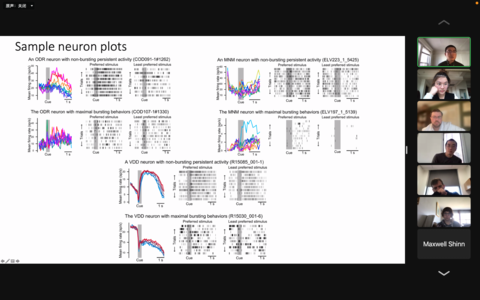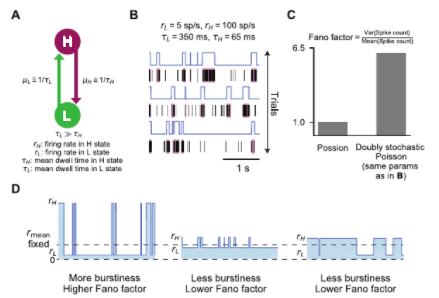
On April 4, 2022, Daming Li successfully defended his thesis, “Bistable Neural Dynamics Underlying Cognition and Spontaneous Activity: Computational Modeling and Empirical Analysis”. Advisor: John D. Murray.
Li explained, “The brain is a multiscale complex system difficult to understand, but is of increasing amount of interest among physicists. A wide variety of cutting-edge experimental techniques allow the collection of brain signals at different spatiotemporal resolutions. While advanced statistical methods can help discover patterns and correlations in the experimental datasets, they typically fail to explain the underlying neuronal processes, namely how those patterns arise from the interactions between the fundamental units in the brain. My thesis aimed to bridge this gap between neural mechanisms and empirical data analysis, using dynamical systems modeling and numerical simulation. In particular, I investigated one type of dynamic pattern – bistable dynamics, and discussed its origin and role in two distinct scenarios. In one chapter, I addressed an ongoing debate on how stimulus information is maintained in working memory (WM), a key cognitive function of the prefrontal cortex. There is a recent proposal based on local field potential analysis suggesting that intermittent bursting, or equivalently bistable dynamics, underlies WM. However, this hypothetical model remains untested on single-neuron spiking activity. There I combined stochastic modeling, neural circuit simulation, and empirical analysis, to show that the extent to which bistability can contribute to WM maintenance is actually strongly limited. In another chapter, I studied a different problem of how cortical spontaneous activity is regulated by the noradrenergic neuromodulatory system. I analyzed an fMRI dataset collected from a chemogenetic experiment, and built a bistable large-scale network model, which successfully explained all the key experimental observations. The computational framework I built integrated cellular mechanisms, macroscopic neuroimaging analysis, and basic cognitive processes. It may also be adapted to other similar pharmacological neuroimaging studies.”
After graduation, Li will be joining Uber as an Applied Scientist.
Thesis abstract: Characterizing the spatiotemporal patterns of neural dynamics is crucial to understanding many brain functions and psychiatric disorders. A commonly observed dynamic pattern is bistability, where the neurons switch between a high and a low firing state over the course of time. However, the origin of bistable dynamics and its role in cognitive functions and spontaneous activity remain unclear. In this thesis, we combined empirical data analysis and dynamical systems modeling approaches to quantitatively study brain dynamics. Statistical analysis allowed discovering various patterns of interest hidden in the experimental data, while dynamical systems modeling allowed us to causally test different hypotheses of the underlying data generating mechanisms. We studied this topic in two separate scenarios. We first investigated the role of bistable dynamics in working memory (WM). A recently proposed mechanism of WM information maintenance based on local field potential analysis says that neural spiking activity displays on/off switching dynamics on single trials. Nonetheless, such bistable dynamic patterns have not yet been validated on single neuron spike train data, and triggered lots of debates in the field. Here we combined statistical modeling, neural circuit simulation, and empirical data analysis, to show that the contribution of bistable dynamics to WM information maintenance is strongly limited. Next, we studied the noradrenergic neuromodulatory effect on the restingstate dynamics. In this context, the widelyused single fixed point models fail to capture the effect on fMRI autocorrelation, suggesting the existence of multiple time scales in the underlying processes. To proceed, we created and simulated a largescale bistable network model, which successfully explained the observed treatment effects, thereby establishing a framework integrating cellular mechanism, macroscopic neuroimaging, and basic cognitive processes. Together, we show that neural dynamics is flexibly reshaped in response to external stimuli and pharmacological interventions in a dynamic environment.
Some photos from the defense



